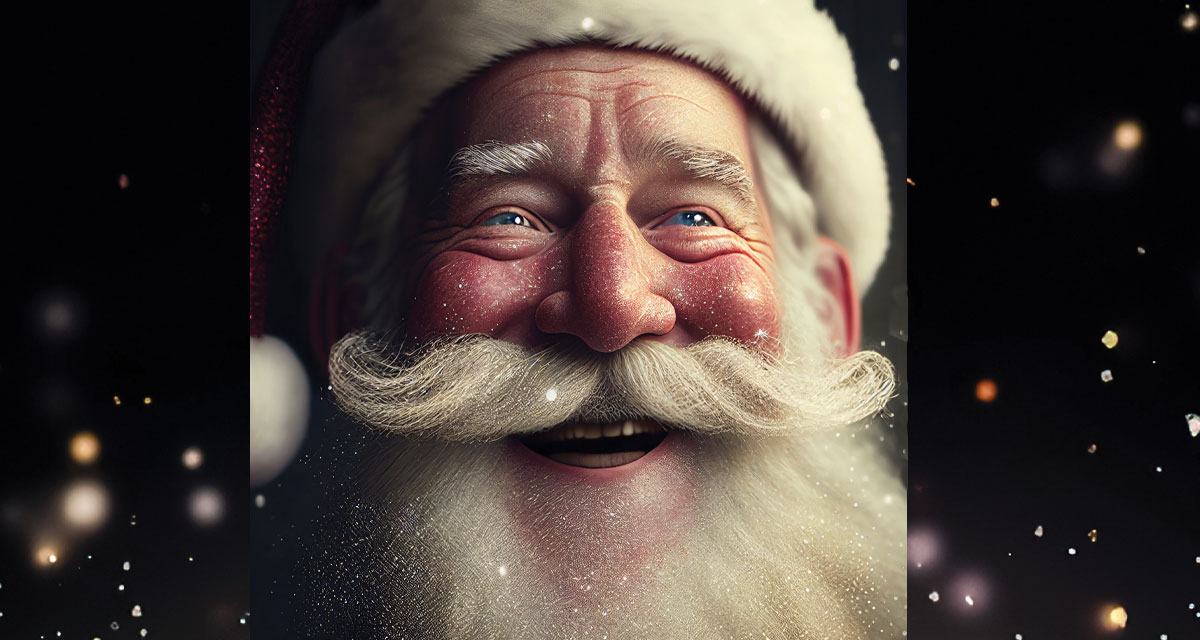For many children, Santa Claus is a larger-than-life figure; a special, magical man who flies through the world on Christmas Eve in his sleigh pulled by eight reindeer and delivers their heart’s delight under the Christmas tree. As parents, we often go to great lengths to preserve the magic…reading stories, leaving out cookies and milk, pretending to look for the reindeer flying over the house or listening for the jingle bells. Christmas is magical for those who believe.
The Santa we are familiar with came from traditions relating to three historical figures: Saint Nicholas of Myra, 16th Century Britain’s Father Christmas and the ancient Germanic God Woden or Odin. Each offers varying amounts of influence to modern day Santa Claus, but knowing their stories can help us understand Santa’s around-the-world flight schedule, his changing appearance and how he ended up with such an interesting mode of transportation.
Saint Nicholas of Myra
The name Santa Claus is a phonetic translation of the Dutch name Sinterklass, a Santa-like character based on the historical figure of Saint Nicholas of Myra. Saint Nicholas was a fourth-century Christian bishop who lived in what is now Turkey. He was known for giving generous gifts to the poor. In the Middle Ages, Saint Nicholas was commemorated when gifts were given out to children on the sixth of December, which was the date of his death in 343 A.D. However, during the Reformation, opposition to the honoring of saints led Martin Luther, the seminal figure of the Protestant Reformation, to suggest Christmas as an alternative day for gift-giving.
Father Christmas
By the time of Henry VIII’s reign during the 16th century, St. Nicholas day was no longer celebrated in England. Alternatively, Father Christmas – a man in green or crimson robes lined with fur – became the symbol of good cheer who was responsible for spreading joy on Christmas day. His physique was different from how we see our modern Santa Claus, as he was shown to be quite slender in the illustration of John Leech’s “Ghost of Christmas Present” which appeared in Charles Dickens’ classic novel “A Christmas Carol.”
Woden (Odin)
Certainly Odin, a god of Norse mythology, has also influenced Christmas. As a bearded, cloaked man who traveled through the winter night sky, Odin bears similarities to Santa Claus, which creates speculation that he was an early pagan influence on the modern-day Santa. Odin was said to deliver toys and candy to children who would fill their boots with straw and set them by the hearth for Sleipnir, Odin’s eight-legged horse. Odin slipped down chimneys and fire holes, leaving his gifts behind.
Santa Claus has a different name in practically every country he visits. But, no matter what he’s called, his arrival is eagerly anticipated by children all over the world. Although the representations and actions of Santa Claus differ from country to country, some parts of the story stay the same. Here is a list of some of the names Santa goes by in other countries that share his legend.
Russia – Ded Moroz
Ded Moroz translates to “Grandfather Frost,” a man known for dressing carefully and protecting himself from the elements. His tall valenki (leather boots) keep his toes safe from frostbite, and his long, Russian-style coat keeps him warm in the frigid temperatures. Ded Moroz typically delivers gifts on New Year’s Eve, with the aid of his three powerful horses.
Brazil – Papai Noel
Christmas falls during the summertime in Brazil, so Papai Noel, or “Father Noel” must discard some of his layers as he moves into the Southern Hemisphere. Instead of a heavy winter costume, his classic-red and white look is silk, so that he can stay cool while making deliveries. On Christmas Day, he places his gifts under brightly shining trees, created entirely from electric lights.
Central Europe – Mikulas
In many countries in Central Europe including Czech Republic, Hungary, Slovenia, Romania, Poland and Slovakia, Szent Miklos or Mikulas is celebrated as a historical figure like Saint Nicholas. The legend of Mikulas originated in Hungary and spread to other Central European countries. According to folklore, Mikulas, along with his assistants, visits homes on December 5th every year where good children are given gifts and candy, and children who have been naughty receive a wooden spoon, pieces of raw potatoes or lumps of coal from Mikulas’ mean assistant, Krampus.
Japan – Hoteiosho
Like Santa, he is an old man who carries a big sack over his back. However, unlike Santa, he has eyes in the back of his head which he uses to know when children are naughty or nice.
Netherlands – Sinterklaas
The Feast of Sinterklaas is observed in the Netherlands on December 6th but begins on December 5th during St. Nicholas’ Eve where people give out gifts, especially to the children. According to the local legend in the Netherlands, Sinterklaas is an aged man with a full white beard who rides on a white horse known as Amerigo moving from house to house, rewarding children for good behavior with gifts.
France – Père Noël
Like his American counterpart, he offers presents to children who were well-behaved during the year. His associate is Pere Fouettard who helps keep track of who has been naughty and who has been nice.



















